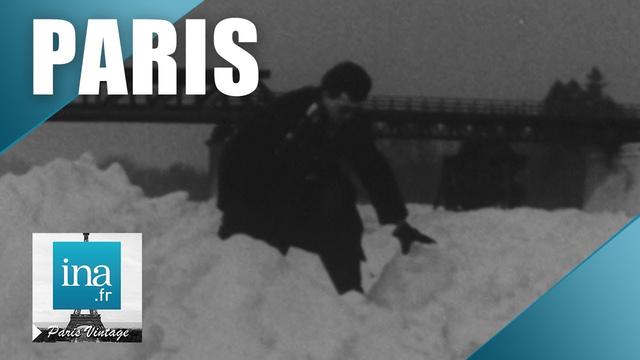
VIDEO. The totally frozen Seine, an extraordinary ice show in Paris
Can you imagine the Seine frozen in ice, crossing it on foot? Hardly. Yet this scenario has happened many times. It frightened the inhabitants of the houses of the bridges in the 15th century, pushed certain Parisians to attempt the crossing on foot in 1788 or took contemporaries by surprise in 1956, attacked by a freezing winter in Paris.
Also read
"The Seine becomes a bundle of crystal"
Digital is good, but it would have been reviled in January 1868: "For two days, when you pick up a newspaper, you start thinking first of all… that it can be used to light the fire”, writes a journalist from the Petit Journal forced to “blow into his fingers” to write.
But above all, that winter, a bewildering spectacle was offered to all: “The Seine becomes a bundle of crystal. And the waters of public fountains offer bizarre crystallizations where frozen water is immobilized in the most fantastic forms. ” Unrecognized forms in Paris, even if the author, Timothée Trimm, remembers a harsh winter in 1829.
In a fairly complete history of the great frosts that hit the Rhine or the Rhône, it echoes the cold of 1768, during which the frozen bells broke while ringing. But the great frost that occurred 20 years later had a greater impact, in the winter of 1788-89.
Before the Revolution, storms and frost starved Paris
The year 1788 was a little meteorological hell: after the spring drought, a hailstorm painted as if it were the of the Last Judgment struck in July. The list of devastating consequences for the crown is long: devastated harvests, inflation in the price of bread, that of wood… All accentuated by a Dantesque winter.

Poverty is there, in a kingdom of France bled white by wars and royal pomp, when November approaches. In the middle of the month, the thermometer drops: -21 degrees for Paris. The wine and the earth freeze, burying the dead becomes a superhuman effort. The Seine froze in November, while the Channel ports were caught in the ice. The horses can cross the Seine on the icy patch, which the men do too, forgetting the risk that the ice will give way and carry them away, as has often happened.
These massive frosts are terrible for Parisians: the frost stops the mills of all the rivers. “The poor, who have no reserves of flour, are reduced to misery and the price of bread only increases. The soup kitchen fed those in Paris who lacked it: the parish of the Faubourg Saint-Antoine, in Bastille, placed 18 pots for 125 soups, four times a day, managing to feed 8,000 people daily.
Alms is being organized, but it does not cover the tripling of the price of bread, a staple food. The thaw will wait until January, after 56 days of a Seine entering 1789 in ice.
1956, the last episode of frost for the Seine in Paris
Now accustomed to the floods of December and June, fewer and fewer Parisians remember the last debacle of the Seine. And this did not take place in 1940, nor even in 1870: before designating the armies’ cracks, the breakup defines the rupture of the layer of ice which covers a river. It was Émile Zola, in his eponymous book, who popularized La Débâcle as military humiliation.
1956 marks the last great freeze on the Seine, two years after the winter that had prompted Abbé Pierre to launch his call for "the insurrection of kindness" in the face of the tragedies of the homeless and poorly housed frozen to death. Using sledgehammers and pickaxes, the men tried to break the ice to extract the boats from the river. A particular situation that Paris has not known since, but which occurred in Ponthierry (Seine-et-Marne) in 1956 and 2006.
VIDEO. Images of the frozen Seine in 1956, broadcast by INA:
When will the Seine freeze again in the capital? Impossible to predict 65 years after the last episode. The only certainty: in the 19th century, this phenomenon occurred almost regularly, every 15 years. A sinusoidal frequency that has lost its rhythm. What climate change could bring back, the heat reducing the flow of the river while the opposite meteorological extreme could favor violent winters.
Was this article useful to you? Note that you can follow Actu Paris in the My Actu space. In one click, after registration, you will find all the news of your favorite cities and brands.
Share







